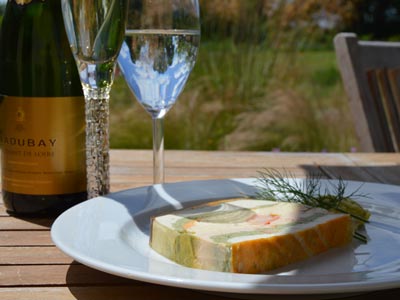The Chateau de Villandry
The Chateau de Villandry was constructed around a medieval keep. It was here in 1189, that Henry II of England and his son, Richard The Lionheart, met with King Philip Augustus (Philip II of France) to sign the treaty known as “The Peace of Colombiers”. (“La Paix de Colombiers”, Colombiers was the name of Villandry in the Middle Ages).
The lands of the Chateau were acquired in the early 16th century by Jean Le Breton. Jean Le Breton was France’s Controller-General for War under King Francis I. Finished in 1536, Chateau de Villandry was one of the last great Renaissance castles built on the banks of the river Loire.
As well as architecture, Jean Le Breton was also interested in the art of gardening. Through him, feudal fortresses made way for delicate chateaux. Ramparts now became walls which allowed one to gaze out over the surrounding landscape. The enclosed, utilitarian gardens of the Middle Ages made way to ornamental gardens. These gardens provided a gentle transition between the house and its natural setting.
The Chateau de Villandry and its Gardens.
At the foot of the chateau formal gardens were laid out overlooking the River Cher. Their splendour earned the estate a reputation far beyond the Loire Valley. Currently the gardens of Chateau de Villandry are a spectacular 20th century interpretation of those 16th century gardens.
They are the creation of Joachim de Carvallo, who purchased the property in 1906. His descendants are still its owners today. The work to transform the gardens required enormous amount of time and money. His vision was inspired, amongst others, by the engravings of Jacques Androuet. Finally his effort and dedication resulted in an astonishing recreation of the beautiful 16th century gardens.
In 1920, in the lowest part of the garden, he decided to install the famous ‘Potager’, a Renaissance kitchen garden. This was done on a scale seen nowhere else. It is formed from nine vegetable beds in which forty varieties of vegetables are planted every year.
Divided between four terraces, the gardens of Chateau de Villandry also include several other gardens. The sun garden (jardin du soleil), created in 2008, the water garden (jardin d’eau) is surrounded by a cloister of lime trees and the ornamental salon garden (les salons d’ornement) with tall boxwood topiary. In addition, the herb garden (jardin de simples) revisits the concept of the monastic garden. Finally the labyrinth (le labyrinthe) presents an enclosed garden containing more intimate spaces.
The Chateau de Villandry, its park and gardens are listed as a world heritage site by UNESCO.










